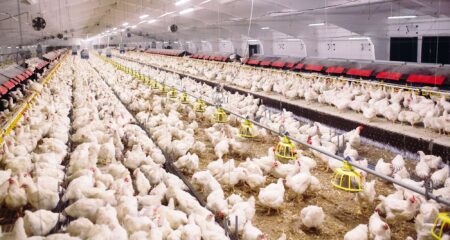The month of August is a critical time across the Corn Belt. It can be make or break for kernel fill and overall yield.
To understand the month’s impacts on the corn crop, we asked agronomists in some of the top corn-growing states to describe August in a single word, reflecting the crop’s progress, condition, and challenges in their regions. Here’s what they had to say.
Disease
Wyffels agronomist Eric Wilson summed up August in Iowa with the word “disease.” Wilson supports southern and northeast Iowa. In mid-August, he said southern rust and heat were the biggest threats to yield.
“Growers are concerned with how quickly their crop is turning [as we] approach harvest,” Wilson shared Tuesday. “Excessive heat and disease this summer has pushed this crop quickly, and it looks like much of the corn will be ready to harvest before beans will be ready.”
The latest Crop Progress report said 9% of Iowa’s corn had reached maturity by Aug. 31, up from 3% the week prior. The crop was rated 1% very poor, 2% poor, 13% fair, 58% good, and 26% excellent.
Nick Groth, a Syngenta agronomist supporting Wisconsin, used the same word to describe August in his state. “Disease was the big factor in August,” he said.
Groth said southern rust was “prolific” across Wisconsin, with the southern part of the state facing the worst pressure. “The southern rust came in earlier and was much more aggressive than what Wisconsin has seen in the past,” he shared.
Groth said other diseases — northern corn leaf blight and tar spot — were common throughout the state as well.
“All of these late-season diseases were a big topic of conversation across Wisconsin, as growers hoped to have set their crops up to fend off these diseases and maintain the impressive yield potential they had going into the month,” Groth said.
The latest Crop Progress report said 4% of Wisconsin’s corn had reached maturity by the last day of August, up from 1% the week prior. The crop was rated 1% very poor, 4% poor, 12% fair, 57% good, and 26% excellent.
Dry
“August in Nebraska has been dry,” said Syngenta’s Travis Gustafson. The agronomist described August as a turning point for corn this summer — and not a good one.
“We had a great June and July for grain production,” Gustafson said. “We really couldn’t have asked for better conditions in those months, but August really flipped over to dry. This will put a cap on our top end yield,” he explained.
USDA reported 13% of Nebraska’s corn had reached maturity as of the last week of August, up from 6% the week before. The crop was rated 1% very poor, 4% poor, 19% fair, 49% good, and 27% excellent.
Ryan Gentle, a Wyffels agronomist covering most of the west half of Illinois, summed up August in Illinois with the same word. “Most of the southern two-thirds of Illinois had one of the top five driest Augusts on record,” he shared.
According to the latest Crop Progress report, 15% of Illinois’ corn had reached maturity by Aug. 31, up considerably from 3% the previous week. The crop was rated 8% very poor, 9% poor, 28% fair, 43% good, and 12% excellent.
Humid
Wyffels agronomist Jared Goplen, whose territory stretches between northwest Iowa, southern Minnesota, and eastern South Dakota, summarized August with the word “humid,” even though the month finished on a cooler and drier note.
It’s the same word he used to describe July.
“The first part of the month brought a fair bit of heat and humidity, following the same trend as much of July. The heat and humidity has shaped how the crop is approaching the final stages of grainfill,” he said.
That humidity has led to disease and nitrogen deficiency in some cases, Goplen said, and whether the crop was negatively affected depends on a couple things.
“If these were managed effectively or soils have better drainage, the crop has made it through the humidity in good shape. But if fungicides were missed or we lost too much nitrogen, the crop is ragged and trying everything it can to get the last few bushels packed in,” according to Goplen.
USDA reported 8% of Minnesota’s corn had reached maturity by the last week of August, up from 2% the week prior. The crop was rated 2% very poor, 6% poor, 19% fair, 49% good, and 24% excellent.
Three percent of South Dakota’s corn had reached maturity by Aug. 31, up from none the week before. The crop was rated 3% very poor, 5% poor, 17% fair, 49% good, and 26% excellent.


:max_bytes(150000):strip_icc()/IMG_1591-2048x1365-362687ca596f4814967abffff2b4be2c.jpg)
:max_bytes(150000):strip_icc()/SuccessfulFarmingShareImage-8fed6410b43147a19ed5ea1e3243227f.png)



:max_bytes(150000):strip_icc()/Nastco1362890046-6a8fd6cab0214b32be927a22eb73f5ce.jpg)

:max_bytes(150000):strip_icc()/IMG_7575-ac6db3006a2145109bcc2df421c7a962.jpeg)

:max_bytes(150000):strip_icc()/Markets-3-Corn-up-3-19bdbeee0041452db8bce0a0f1c8b883.jpeg)